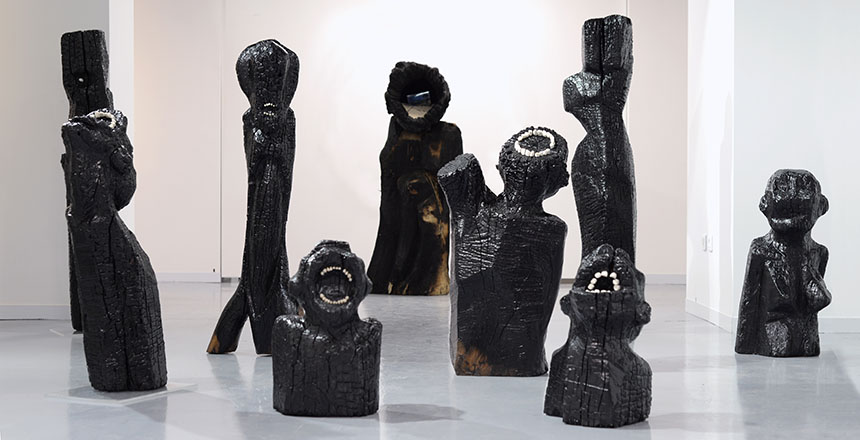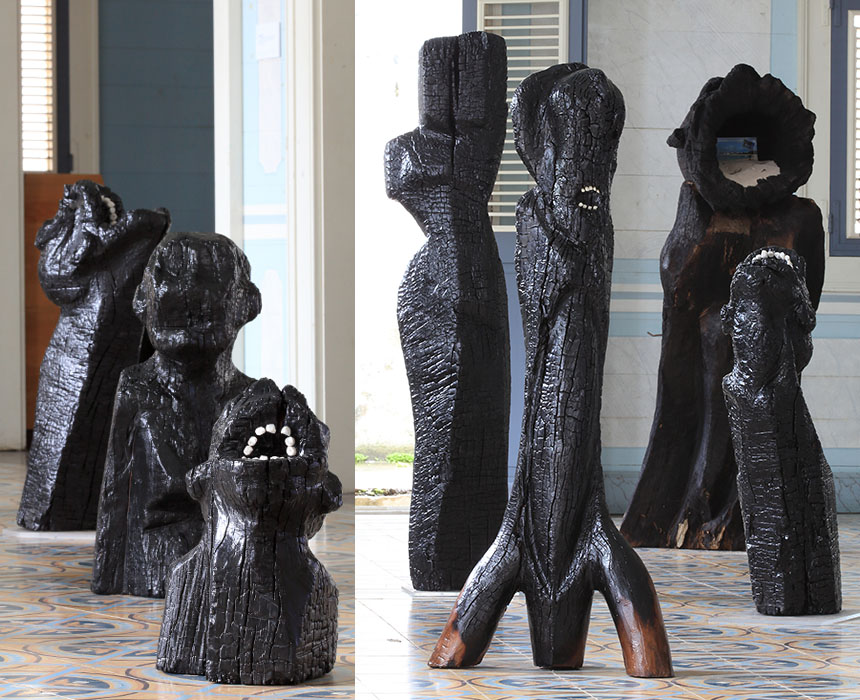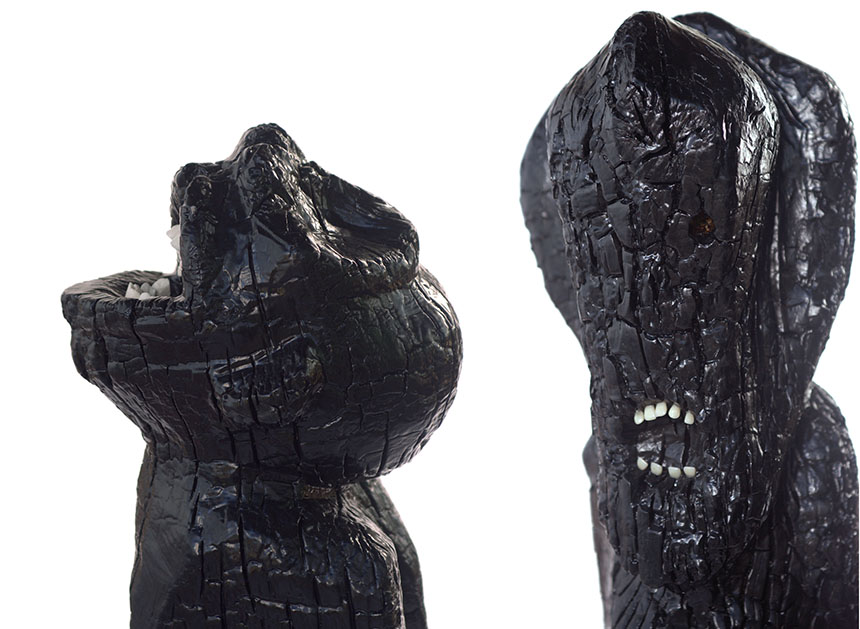| Bienvenue sur reparations-art.org / Welcome at reparations-art.org (english version) | ||
Making the black / Moun brilé |
||
| "Réparations" l'exposition | ||
 |
||
| Bois brûlé et corail | ||
Racism and racialized representations stem directly from a successively slave, colonial and post-colonial history, which is the bedrock of our contemporary society. When he invented the black people to enslave it, the slaver also invented the white people. Repairing these racialized representations today proves to be vast and complex, given the extent of the semantic fields reached by racism structuring economies, identities and cultures. |
||
 |
||
| Vue de l'exposition au Fonds d'Art Contemporain de la Guadeloupe | ||
Moun Brilé / burned people The process of creating the Moun brilé ("burned people") obviously summons large-scale human cremation, genocides (or however you want to name it), reducing human beings to energy, and then to ashes. |
||
 |
||
|
||
 |
||
| Vue de l'exposition au Pavillon de la Ville de Pointe-à-Pitre | ||
 |
||
 |
||
The "Reparations" exhibition is formalized around 5 axes: - A skull without face / Reliquaries |
||
| Pour toute demande d'information : ISMproject@reparations-art.org www.francoispiquet.com François Piquet 169 rue Lethière 97180 Sainte-Anne, Guadeloupe, France (+590) 690 36 86 24 |
||